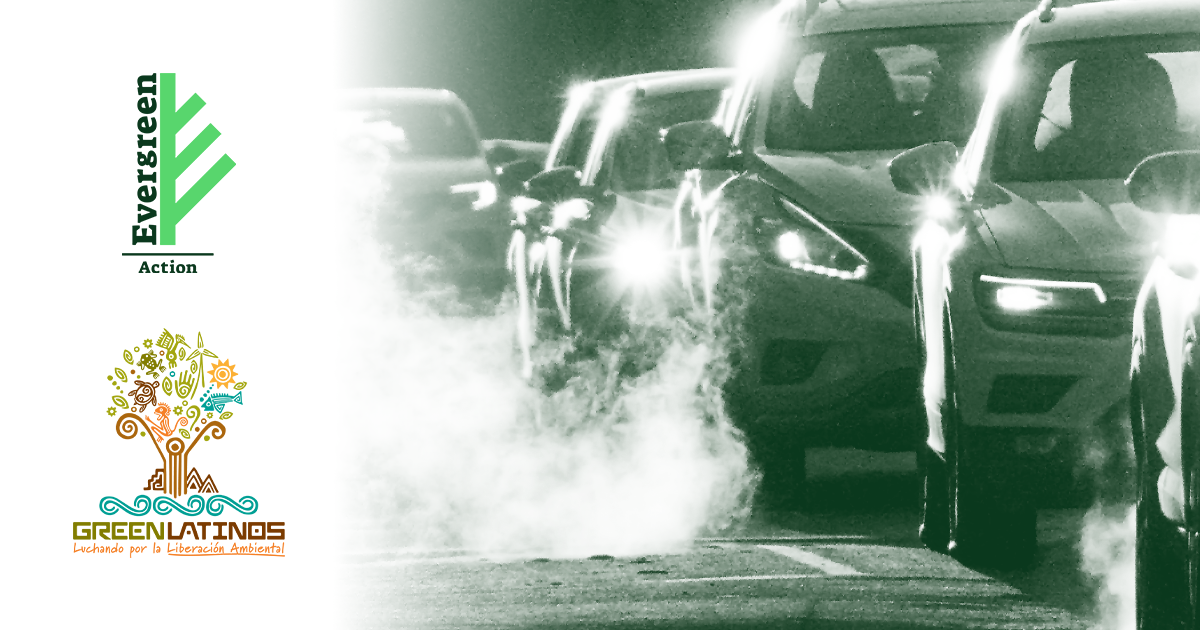by Evergreen Action and GreenLatinos
Cars and trucks are the greatest contributors to greenhouse gas emissions in the U.S. But vehicle emissions are just as much of a threat to public health as they are to the climate. Cars and trucks produce significant carbon dioxide emissions, and also emit co-pollutants like particulate matter (PM) and nitrogen oxides (NOx) that create smog and cause respiratory irritation and exacerbate illnesses such as asthma. Diesel trucks are so dangerous to public health that areas with heavy truck traffic are literally called “diesel death zones” because exposure to truck soot pollution causes lung diseases and death.
By tackling pollution in the transportation sector, President Biden has the power to fight climate change and deliver significant public health benefits to the communities hit hardest by death and illness caused by transportation pollution. The Biden administration set a goal to reduce greenhouse gas pollution economy-wide by 50-52 percent by 2030; transportation pollution makes up nearly a third of all greenhouse gas pollution in the country. With only two years left in the President's first term, strong standards must be put in place to reduce vehicle pollution by accelerating the transition to electric vehicles.
To live up to the President’s climate target and protect communities impacted by vehicle pollution, the administration must develop more aggressive timelines for vehicle emission standards by:
- Accelerating the rulemaking timeline for clean cars standards,
- Finalizing NOx heavy-duty vehicle regulations and starting the rulemaking for heavy-duty vehicle greenhouse gas emission standards by December 2022, and
- Immediately approving California’s vehicle waiver
Download the full memo now.
